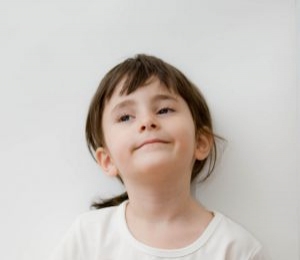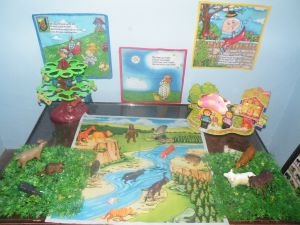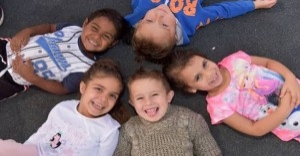

Wassily Kandinsky was a Russian artist, printmaker and art theorist whose works were among the first to herald the modernist movement in art. Since childhood, he was deeply fascinated by colour and shapes and this is reflected over the many artistic phases of his own career. The following provides information on Wassily Kandinsky's art experiences that can be created by children.
Salvador Dali was a famous Spanish artist known for being unconventional in both his creations and appearance. His paintings, sculptures and films often have a dream-like quality about them, often because the bizarre landscapes or actions depicted cannot happen in the real world. This led to his art being described as Surrealism. Though such terms might sound rather highbrow, the art can be surprisingly conducive to working with children because of the very lack of logical possibility. Here are a few ways that you can explore Salvador Dali with your learners in early childhood settings.
Jackson Pollock was an American artist who painted in the abstract expressionist style. He is best known for works created by dripping and splashing paint on a large canvas that would lie flat on the floor. Additionally, he would often use dance-like movements when splashing colour on the canvas - a method that came to be known as action painting. Here are a few ways that you can explore Jackson Pollock with your learners in early childhood settings.
One of the greatest French artists of the 20th century, Henri Matisse is known for his fluid use of colours and forms in paintings and sculptures. The following provides information on Henri Matisse's art experiences that can be created by children.
Considered one of the greatest artists of the 20th century, Pablo Picasso is famous for a style of painting known as Cubism. As opposed to traditional art which depicts three-dimensional figures as they might appear to a human eye – for example, the back of a human figure’s head or rear side of a house not being visible – cubism strove to represent all sides of a figure, often by breaking it up and re-assembling it in abstract and geometric form. Here are a few ways that you can explore Pablo Picasso with your learners in early childhood settings.
Oscar-Claude Monet was a pioneer of the French Impressionist style of painting. According to this, an artist’s impressions of a landscape or object are more important than how it really looks. Yet another feature of his art was the painting of the same scene many times in order to capture the changing of light and the passing of the seasons. The following provides information on Claude Monet's art experiences that can be created by children.
Andy Warhol was one of the most famous American artists of the latter half of the 20th century. Born Andrew Warhola in 1928 in Pennsylvania, he originally worked as a commercial artist, designing commercials and window displays for stores. He soon became famous as an artist in the Pop Art movement which uses images from popular cultures like advertising, comic books and other everyday objects. The following provides information on Andy Warhol's art experiences that can be created by children.
Dutch painter Vincent Van Gogh has been widely acclaimed as one of the greatest figures in the history of art. His works exude intense emotional power with their vivid colours and bold brushstrokes. Described as Post-impressionist, Van Gogh’s paintings paved the way for the modernist movement in art around the world. The following provides information on Vincent Van Gogh's art experiences that can be created by children.
 Open ended questions cannot be responded to with one word answers such as yes or no. These types of questions enables a child to provide… Read More
Open ended questions cannot be responded to with one word answers such as yes or no. These types of questions enables a child to provide… Read More
 During your child’s preschool years, an important milestone begins to emerge. This is the development of pre-writing skills. Pre-writing skills are used to encourage, develop… Read More
During your child’s preschool years, an important milestone begins to emerge. This is the development of pre-writing skills. Pre-writing skills are used to encourage, develop… Read More
 Open ended materials enables children to play freely. They are objects that have no rules to follow, use or function. Raw materials that can be… Read More
Open ended materials enables children to play freely. They are objects that have no rules to follow, use or function. Raw materials that can be… Read More
 An Acknowledgment of the Country is a way of showing respect for the Traditional Owners and can be given by both non-Indigenous people and Aboriginal… Read More
An Acknowledgment of the Country is a way of showing respect for the Traditional Owners and can be given by both non-Indigenous people and Aboriginal… Read More
 Language plays an important role in a child’s development. It enables a child to communicate effectively with their family, learn at school, socialize with friends,… Read More
Language plays an important role in a child’s development. It enables a child to communicate effectively with their family, learn at school, socialize with friends,… Read More
 Like adults, children have to deal with their own stress in life. Moving house, starting a new school, preparing for a new sibling - these are… Read More
Like adults, children have to deal with their own stress in life. Moving house, starting a new school, preparing for a new sibling - these are… Read More
 Playdough is such a versatile material. It provides numerous benefits to children as they manipulate it, it is safe and soothing and provides children with… Read More
Playdough is such a versatile material. It provides numerous benefits to children as they manipulate it, it is safe and soothing and provides children with… Read More
 Teaching children about sustainability enables them to appreciate and respect the natural environment. Early childhood services can provide meaningful hand on learning experiences in order… Read More
Teaching children about sustainability enables them to appreciate and respect the natural environment. Early childhood services can provide meaningful hand on learning experiences in order… Read More
 Recycling is an important concept that teaches children to care for the environment. It encourages children to be responsible and show a growing appreciating for… Read More
Recycling is an important concept that teaches children to care for the environment. It encourages children to be responsible and show a growing appreciating for… Read More
 When children apply paint to paper, glue things together, or pound a lump of clay, they experiment with colour, shape design and texture.
Read More
When children apply paint to paper, glue things together, or pound a lump of clay, they experiment with colour, shape design and texture.
Read More

In early childhood education, children’s artwork is often vibrant, expressive, and deeply personal. Yet too...
See more...
Process art is all about focusing on the creative experience rather than the final product...
See more...
The EYLF explains assessment for children’s learning as the process of gathering and analysing information...
See more...© 2009-2025 Aussie Childcare Network Pty Ltd. All Rights Reserved.

